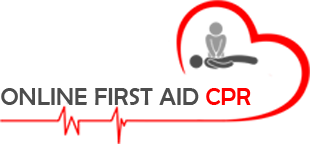- +1 (909)-728-2512
- info@onlinefirstaidcpr.com
- Greater Los Angles, CA
AED Certification Class
Adult
Check and Call:
Check victim’s response and call 911:
Tap the shoulder of the victim and shout. If there is no response, call for help. Tell a bystander to call 911 and get the AED. If you are alone, call 911 and get the AED yourself. Return quickly. Use your own phone to call 911 and put it on speaker mode to allow the emergency dispatcher to give you instructions.
Give Compressions:
Use 2 hands to give 30 chest compressions:
Lay the victim face up on a flat and firm surface.Quickly take the clothing off the victim‘s chest. Position your hands in the center of the chest. Compress the chest 30 times. Provide high-quality compressions.
cpr adult
Child CPR
In children, the cardiac arrest usually occurs due to respiratory arrest and not due to a heart problem. Common causes include poisoning, injury, drowning, choking, and asthma.
Infant CPR
Infant Age: Less than 1 year old
- Check for response and call 911
- Check for breathing
- Give Chest Compressions
- Open the airway
- Give 2 rescue breaths
- Resume cycles of 30 compressions and 2 rescue breaths
Choking
Child or Adult Choking:
A serious airway blocking is life-threatening. Identify a choking emergency and act fast. The technique to manage choking is the same for adults and children of age 1 and older. To tell the difference between choking and other emergencies, look for the universal sign of choking: one or both hands at the throat. Suspect choking when someone unexpectedly stops talking.
Mild Chocking:
A person with a mild airway block can cough forcefully or speak. Do not interfere. If the person can speak, he can breathe also. Encourage coughing, and check if the airway blocks severely.
Severe Chocking:
A person with a severe airway block cannot breathe, cough effectively, or speak. He may make a high-pitched sound when inhaling or turn blue around the lips and face.

Infant Choking
Infant Choking: An infant (under 1 year old) won‘t show the universal sign of choking. Remain alert and identify a sudden onset of these symptoms:
- Breathing difficulty or no breathing
- Unable to cry or cough well
- Bluish color skin
- Wheezing or high-pitched sound
- Panic or distressed facial expression
- Bulging or tearing eyes
Mild Chocking
AED
AED stands for Automatic External Defibrillator, which is a computerized device that can examine a victim‘s heart rhythm, and accordingly deliver an electrical shock to restore a heartbeat. AED provides directions via visual indicators and voice prompts. The device is quite safe and simple to use. AED will not deliver a shock if the victim doesn‘t need one. It will only shock a victim whose heart is in a shock-able rhythm.
AED Use
Use an AED as soon as it is available. Put the AED near the head of the victim and switch it on by pushing a button, pulling the handle or lifting the lid. Follow the AED prompts.
Remove or cut the clothing (e.g. shirt or a bra) from the chest area to expose it. If wet, wipe the chest. Apply the pads to the chest by following the pictures at the back of the pads.
- Peel off the AED pads.
- Apply1 pad on the right side of the chest, just beneath the collarbone.
- Apply the other pad on the lower left side of the chest.
- Connect the pads to the AED. Some pads remain pre-connected to the AED.
If 2 trained rescuers are present, one can use the AED while the other can perform the CPR. The one using the AED applies the pads around the hands of the other rescuer providing chest compressions. Don‘t stop the CPR process while the other rescuer is preparing the AED for use. The AED will prompt you to halt CPR when it is ready to examine the heart rhythm.
